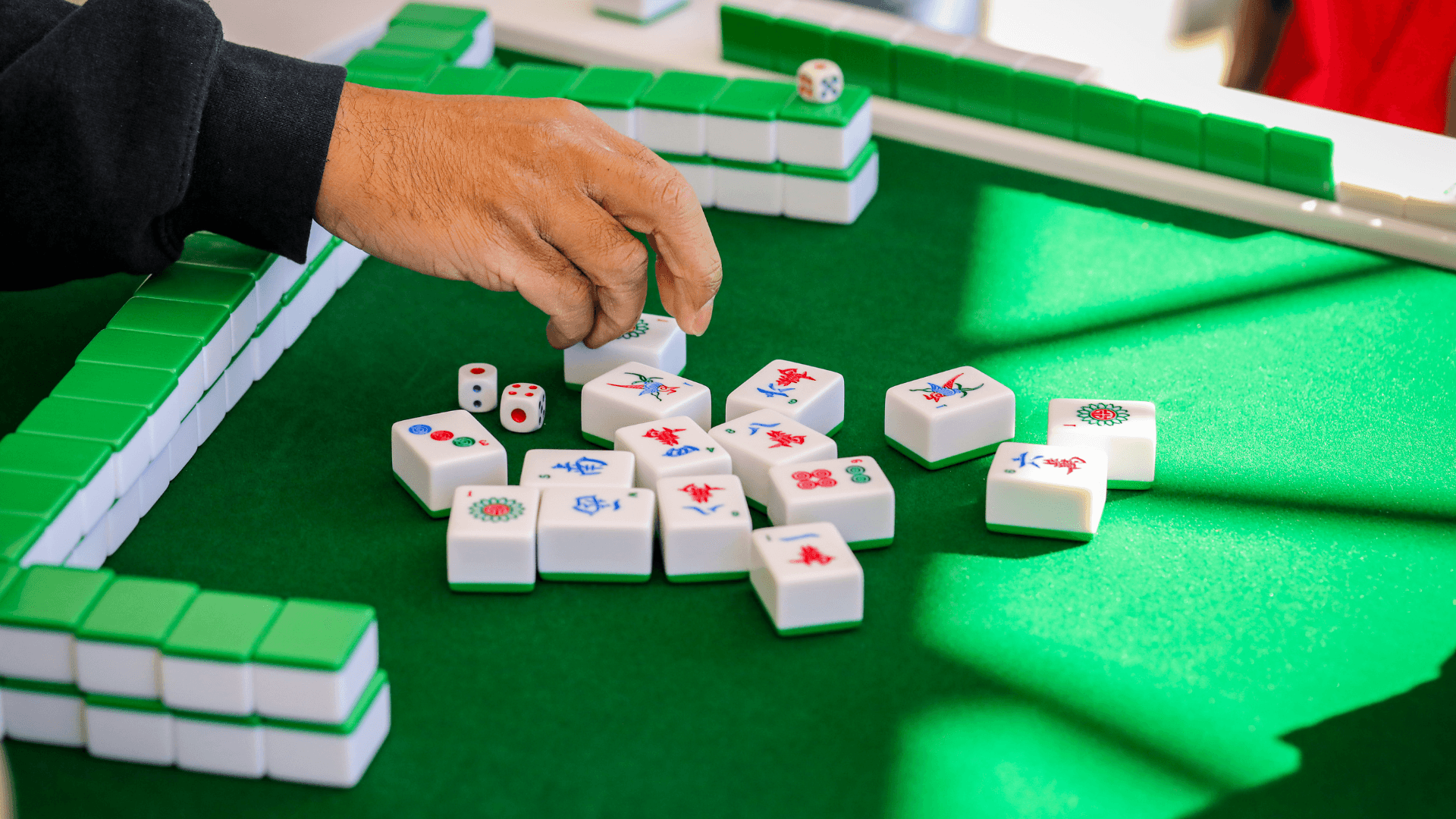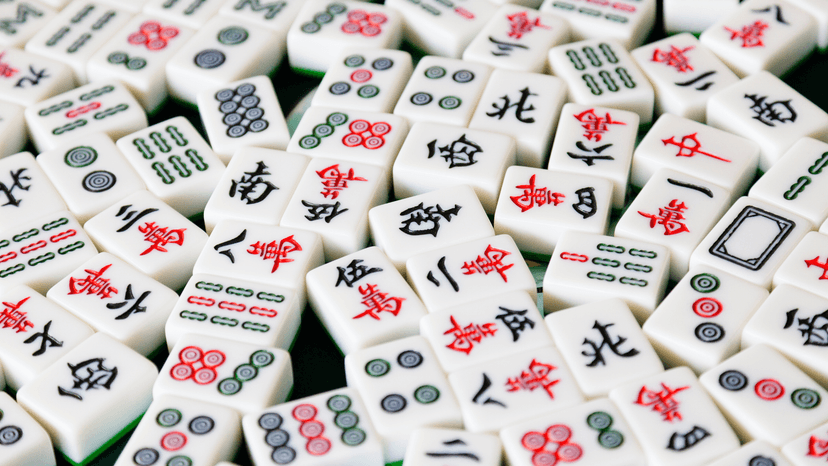Scoring in Mahjong

Mahjong might not be the trickiest game to learn, but keeping track of all the scoring details can be a bit much sometimes. That’s why some folks aren't always clear on how to score in Mahjong. However, there are some key things to remember if you just want to focus on playing one specific variation.
If you've been searching for how to score in Mahjong, you've landed in the right spot. This guide will break down everything you need to know about Mahjong scoring. Let's dive in!
How Do You Score Points in Mahjong?
Scoring criteria often include specific Mahjong tile melds or other hand arrangements. It also considers how the hand was played and if any unique combinations are present. When multiple criteria are met, and one is a subset of another (like having a meld of one dragon versus a meld of all three dragons), only the stricter criteria get scored.
The points earned can then be translated into scores for each player using a scoring system. These scores are typically converted into payments between players while playing Mahjong as a form of entertainment and friendly wagering.
It's important to note that 'points' and 'score' can refer to different concepts. Players often settle wagers based on the points accumulated during a round, alongside other factors. Sometimes chips or tokens are used instead of direct cash exchanges.
In many games, it's common for only the winner to receive cash, with the stakes from the three losing players being adjusted to match the winner's gains. However, there are several ways to handle payouts among participants. Here are some common methods:
- If a player wins by discarding a tile, the player who made that discard pays double.
- If a player wins by achieving a self-drawn hand (a tie), every losing player pays double.
- When a player wins from a high-risk situation (usually a complex winning hand), the player who made the discard covers the payments for the other two losing players.
Understanding Mahjong Scoring Rules
Chinese Mahjong Scoring Essentials
When it specifically comes to Chinese Mahjong scoring, here are the fundamental rules to keep in mind:
- Based on the presence of specific melds, pairings, and bonus tiles, each player adds up the fundamental points for his hand.
- Each player doubles his basic points one or more times based on ownership of specific uncommon melds or combinations of melds. The winner adds additional basic points for gaining mahjong and maybe for finishing his hand in several unique ways.
- Depending on his hand's formation of uncommon patterns, such as those made completely of honor tiles, or being finished uniquely, such as stealing an exposed kong, the winner doubles his basic points once or more.
- Each of the three losers pays the winner his entire points.
- The losers split the difference into points among themselves.
- In his dealings, East makes duplicate payments or receipts.
- There are many Special Limit hands that, if acquired, provide the possessor with the most points assigned to his hand.
American Scoring
In the American version, players utilize a card with a point value for each hand that specifies a narrow number of hands as the only legitimate winning hands. Two main Mahjong regulatory organizations in the United States, the National Mahjong League and the American Mahjong Association, employ this method, with new cards that specify the legal winning hands being produced every year. Each card often includes scoring requirements that make mention the year the scorecards are published.
Shanghai Scoring
The Shanghai variant's scoring system is complex, with a wide range of requirements and exaggerated ratings for more uncommon hands like the thirteen terminals. There is typically a minimum point value in the Shanghai variation due to the inflated point values.
Singaporean Scoring
While using a different set of tiles, Singaporean scoring is comparable to the Chinese scoring method. Here, regular payment variations apply. But, there are those in which the dealer is also required to pay and receive twice.
Hong Kong Scoring
Due to the limited number of factors employed in the conventional Hong Kong grading method, the score is frequently poor. The point translation function is a piecewise function, and the general scoring modifiers are in effect.
Scoreless hands are awarded a fixed sum, and each point doubles the score. Players sometimes play with the extra constraint that a winning hand must be of some point value, often ranging between one and five points, with three being the most frequent. This is because zero-point hands are common.
Japanese Scoring
Each player starts with a score. This amount is often between 25,000 and 30,000. It may be an agreed-upon initial value. In current tile settings, this is often represented by a row of bars with the following four denominations: 10,000, 5,000, 1,000, and 100. The bars resemble long Chinese dominoes. If not, all that is represented online are the point totals.
Limits in Mahjong Scoring
A score limit is imposed by some variants. The usual point translation function, which assigns a constant score to points up to the first restriction, works in many situations where there are limitations. Once further limitations are achieved, the score rises.
A scoring restriction may serve as more of a gambling motivation. If the scoring limitations were six and nine points, a hand with seven or eight points would be valued the same as one with six points, which may encourage players to aim for nine-point hands.
High-risk discards
As the size of the wall shrinks, several versions may additionally apply fines for discards that are deemed to be high-risk. The players who made the high-risk discards are responsible for covering the winner's points if a player wins or goes out self-drawn after making a high-risk discard. A discard is deemed dangerous if there are enough open melds to show that, before it was claimed, it would very certainly have allowed for the completion of a limited hand.
Conclusion
Some complications occur when players are trying to play different mahjong variations at once. So, it’s better to stick with one variety and master it first.
In this guide, different rules for different variations are discussed so that players can choose the one they prefer. We have discussed Chinese, American, Japanese, Shanghai, Singaporean, and Hong Kong Scoring. Hope that it will be enough for an enjoyable experience.
FAQ
What is the highest-scoring hand in Mahjong?
Even though a player's tiles' value might increase significantly when they double the computation, the maximum score in Mahjong is 1,000 points.
How does Chinese Mahjong scoring work?
Each hand has a score between 1 and 88 points, depending on its difficulty. Each hand's points are combined into a straightforward total. Mahjong must be declared with a minimum of 8 points in the official Chinese version.
How do you score Western Mahjong?
- A hand with 4 Pungs earns 6 points.
- A hand with 4 Chows earns 2 points.
- 2 points for 1 Dragon Pung or Kong.
- Six points for a pair of Dragon Pung.
- Pung/Kong of Winds that corresponds to the seat or round earns 2 points.
- Seasons/Flowers tile: 1 point each.
- 1 point if the win is by self-drawn.







